
All categories
Featured selections
Trade Assurance
Buyer Central
Help Center
Get the app
Become a supplier

(949 products available)
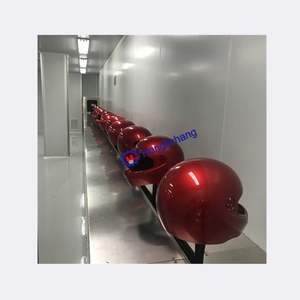




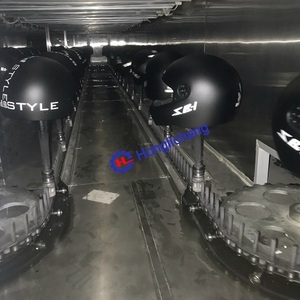




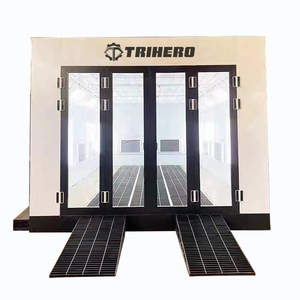




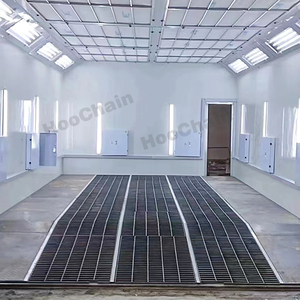

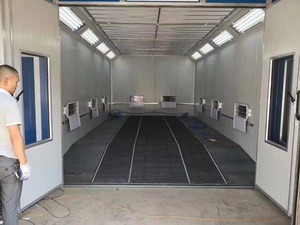





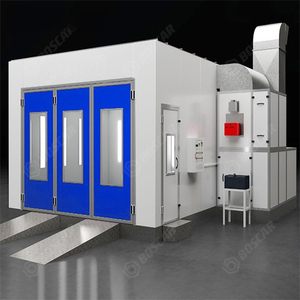



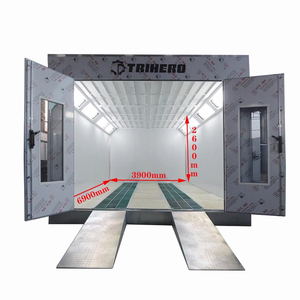
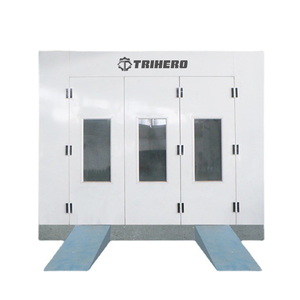
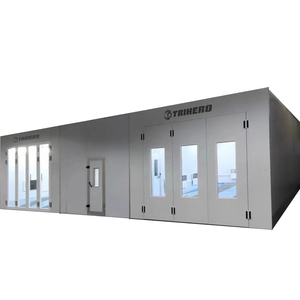

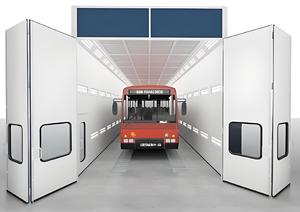
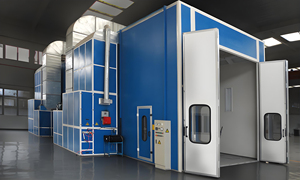





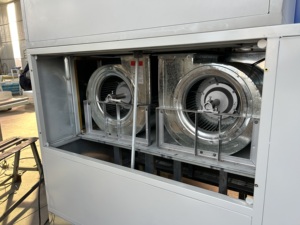

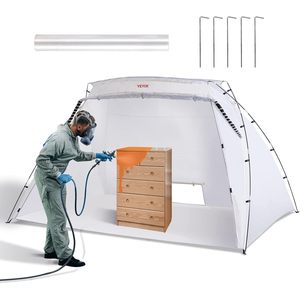


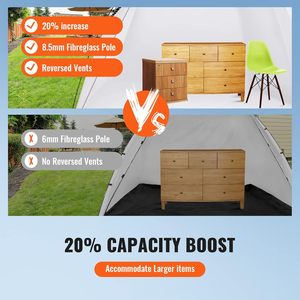
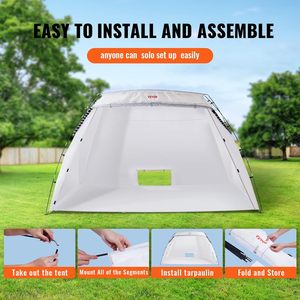
A spray booth for polyurethane is a controlled environment where paint and other coatings are applied to vehicles and other equipment. There are different types of spray booths for polyurethane, including:
Down Draft Spray Booths
These are spray booths where the air moves downwards. They have air filters on the ceiling that remove particles from the air before they get to the spray surface. The design of a down draft spray booth for polyurethane helps maintain a clean environment. It also minimizes the risk of dirt and dust contaminating the paint during the application process. The only challenge of this spray booth is that it has a high installation cost and requires a robust heating system.
Cross Draft Spray Booths
Cross draft spray booths have air movement that flows across the booth from one side to the other. The air enters through floor grates and exits through exhaust fans on the opposite wall. The design allows for quick air changes, making it suitable for fast-paced operations. Due to the simple design of cross draft spray booths, they are affordable and easier to install.
Side Draft Spray Booths
These spray booths combine the features of down draft and cross draft booths. They have air moving in a circular motion, with air inlets on the sides and exhausts on the booth's ends. The design creates a uniform airflow across the work surface and ensures even coating. Side draft spray booths are versatile and can adapt to various applications.
Bench Spray Booths
Bench spray booths are smaller and portable. They are used for limited applications and have a workbench with integrated filtration and airflow systems. The design of bench spray booths makes them suitable for industries with small parts and limited space. They also have a cost-effective solution for spray applications.
Downdraft Pit Booths
These are spray booths that combine down draft airflow with a pit design. They allow for easy vehicle access and are suitable for large vehicles and heavy equipment. The downdraft pit booths minimize the risk of overspray and provide a clean working environment.
Here's a breakdown of the key specifications of spray booths for polyurethane:
1. Size and Dimensions
The booth dimensions need to accommodate the largest items that will be coated. This includes the height, width, and length of the booth.
2. Airflow and Filtration
Air exchange rates: the number of times the booth's air volume is replaced every hour. A higher rate ensures better overspray control and a cleaner work environment.
Airflow patterns: even, uniform airflow is essential to prevent drafts that could affect the coating quality.
Filtration efficiency: the ability of filters to capture particles of varying sizes, including fine mist and larger overspray droplets.
3. Lighting
Booths should have sufficient lighting for visibility during the coating process. This includes considering the placement and intensity of lights to avoid shadows and ensure even illumination.
4. Temperature and Humidity Control
Booth specifications should include temperature and humidity controls. These controls are essential to the drying process and the coating's curing performance.
5. Safety Features
The booths should be equipped with fire suppression systems, explosion-proof fans and grounding for static electricity control.
6. Coating Application Systems
The type and specifications of spray guns or automated systems should be included. This includes details such as fluid tips, nozzle sizes, and application parameters.
7. Noise Control
Considerations for noise levels in the booth, including noise-reducing features and compliance with regulations.
8. Structural Integrity
Booth construction materials, such as steel or aluminum, should meet durability and corrosion resistance standards. The booth should also be designed to withstand environmental factors like wind and seismic activity.
9. Compliance with Environmental Regulations
The booth must meet environmental regulations regarding VOC emissions, waste management, and air quality standards.
Regular inspection and cleaning: the booth structure and components should be inspected for damage or wear. All filters, fans, and lighting fixtures should be cleaned or replaced.
10. Electrical and Control Systems
The users should follow the manufacturer's instructions for the electrical and control systems. This includes ensuring proper wiring, control panel functionality, and compliance with electrical codes.
There are many factors to consider when buying a spray booth for polyurethane. The most important ones are discussed below.
Size
Choosing the correct spray booth size is critical. The booth must be large enough to accommodate the item being coated, allowing space for the technician to move and airflow to circulate. A booth that is too small may result in wet paint overspray on unprotected nearby equipment. If the booth is oversized, it may compromise the coating's cure time due to increased volume and air travel distance.
Airflow
Proper airflow is crucial to ensure a consistent paint finish and to meet safety requirements by clearing flammable vapors. The booth's airflow must be sufficient to provide a laminar flow that directs overspray towards exhaust filters without disrupting the spray pattern. Air changes per hour (ACH) and velocity (measured in feet per minute) at the booth's work area must be measured to ensure the specified booth airflow is attained.
Lighting
Booth lighting is critical for monitoring paint application. Lighting must provide uniform illumination without shadows. The correct color temperature (usually between 5000K and 6000K) allows for accurate color matching. Inspecting surfaces under consistent lighting is essential for ensuring quality control. Insufficient or uneven lighting may result in missed defects or inconsistencies in the paint finish.
Filtration
A good filtration system captures overspray particles and prevents them from being released into the atmosphere. The filters must have a high efficiency level to meet environmental regulations and protect the booth's internal components. Additionally, a multi-stage filtration system can minimize maintenance costs by extending the life of downstream filters by removing larger particles.
Heating and curing
Some spray booths are equipped with heaters to accelerate the drying process of the paint. The heat must be evenly distributed to avoid hot spots and ensure the coating cures uniformly. Moreover, the booth temperature must comply with the paint manufacturer's guidelines. Incorporating a curing stage in the booth can enhance the coating's durability and reduce the time between coats.
Safety features
Polyurethane spray booths must comply with safety standards to protect workers and the environment. Key safety elements include explosion-proof lights, proper ventilation to dilute harmful vapors, and safety interlocks that prevent booth operation when doors are open. Additionally, booths should have fire suppression systems and adequate employee personal protective equipment (PPE).
Ease of maintenance
When choosing a spray booth, consider how easy it is to clean and maintain. Features such as accessible filters for quick replacement, smooth surfaces for easy cleaning, and an intuitive design for simple operation and monitoring can minimize downtime and enhance productivity. A booth that is easy to maintain will make sure it operates efficiently for a long time.
Here are the steps on how to replace a spray booth for polyurethane:
Identify the Problem
Technicians should walk inside the booth to identify and examine the water leaks. They should check the booth walls, windows, and doors for any signs of damage. They should also look for any visible holes or cracks that could be the source of the leak. In case the source of the leak is not visible, they should use a moisture meter to detect water infiltration. They should also inspect the booth's ceiling for any signs of sagging or damage. They should also check the roof for any visible damage, such as missing shingles or cracks. In case the roof is damaged, it should be repaired or replaced immediately.
Prepare the Area
After identifying the source of the leak, the area should be cleared of any equipment, tools, and materials. This will allow for a safe and efficient repair process. The floor should be cleaned to remove any water or debris.
Repair the Booth Walls
In case the leak is coming from the booth walls, any holes or cracks should be sealed using a suitable sealant or caulking. The sealant should be applied evenly to ensure a complete seal. Damaged panels or sections should be replaced. The new panels should be installed using screws or adhesive, depending on the booth's construction.
Inspect and Repair Windows and Doors
The windows and doors seals should be inspected for any signs of damage or wear. Any damaged seals should be replaced to prevent water infiltration. The seals should be removed and cleaned to ensure proper adhesion. New seals should be applied and pressed firmly to ensure a tight seal. Damaged windows or doors should be replaced. The new windows and doors should be installed according to the manufacturer's instructions.
Ceiling and Roof Repairs
In case the leak is coming from the booth's ceiling, any damaged panels should be replaced. The new panels should be secured using screws or adhesive. The roof should be inspected for any signs of leaks or damage. In case the roof is damaged, it should be repaired or replaced.
Ventilation System Inspection
The ventilation system should be inspected to ensure it is functioning properly. Any damaged components, such as fans or filters, should be replaced. The ventilation ducts should be checked for any leaks and repaired if necessary.
Final Inspection
After completing the repairs, a final inspection should be conducted to ensure the spray booth is watertight. The booth should be tested for any signs of water infiltration. In case any issues are detected, the necessary repairs should be made immediately.
Q1: Can someone build a spray booth for polyurethane in their garage?
A1: It is possible to construct a spray booth in a garage, provided that the necessary safety standards and spray booth requirements are met. The garage must be adequately ventilated, and provisions must be made to filter out harmful particles and chemicals from the air. Additionally, the construction must conform to local regulations and standards.
Q2: How often should the filters in a spray booth for polyurethane be changed?
A2: The frequency of filter changes can vary based on usage, but it is typically recommended to inspect them weekly and replace them at least monthly. Factors such as booth usage, the type of paint or coating being used, and the environmental conditions can affect filter performance and lifespan.
Q3: Are there any specific safety measures for spray booths for polyurethane?
A3: Yes, there are specific safety measures that must be adhered to in spray booths for polyurethane. These include adequate ventilation to minimize the risk of flammability and exposure to toxic fumes, the use of personal protective equipment (PPE) such as gloves and masks, compliance with safety standards and regulations, and training employees on safe handling practices for chemicals and equipment.
Q4: Can water-based polyurethane be sprayed in booths designed for oil-based polyurethanes?
A4: Yes, booths designed for oil-based polyurethanes can be used to apply water-based formulations. However, it may require additional cleaning to remove any residual oil-based products, ensuring no contamination occurs.
Q5: What is the ideal temperature for spraying polyurethane in a spray booth?
A5: The ideal temperature for spraying polyurethane is between 20 to 30 degrees Celsius (68 to 86 degrees Fahrenheit). This temperature range allows for optimal atomization of the spray and ensures proper curing without the risk of fast evaporation or slow curing due to low temperatures.